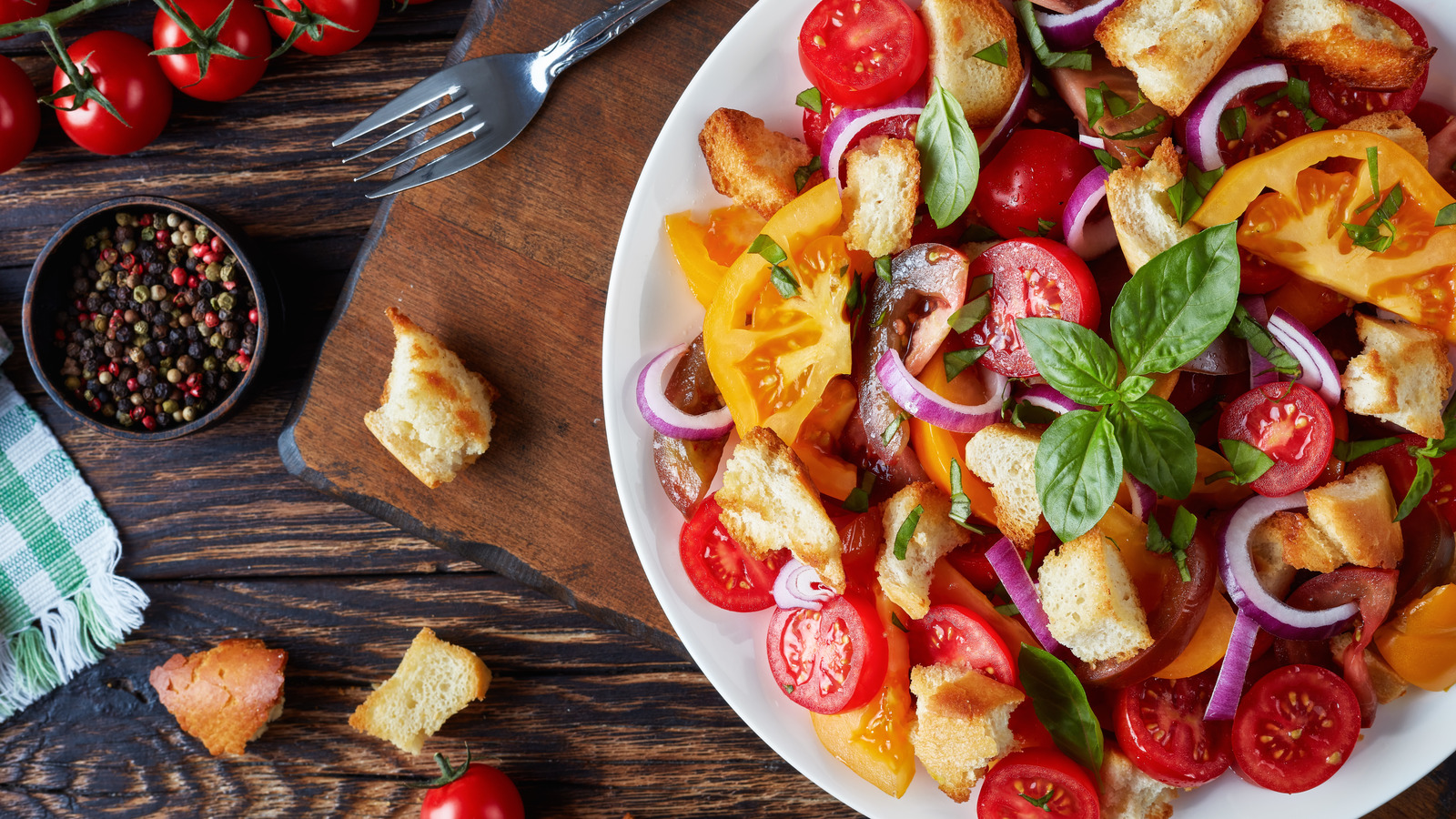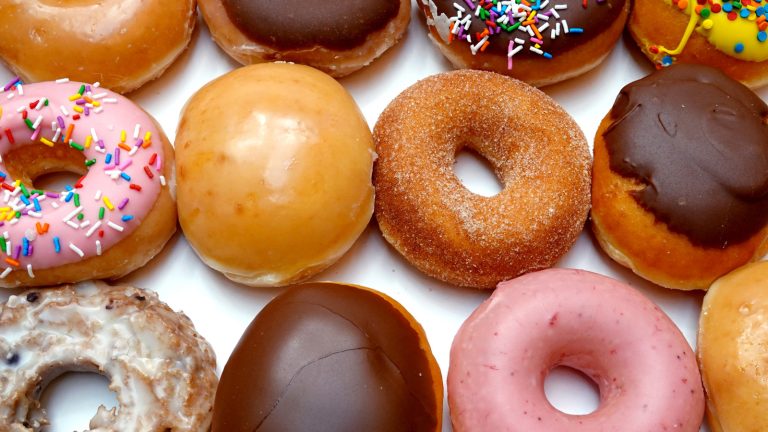There are several classic Italian recipes that use stale bread in various ways, including the well-known soup, ribollita, and panzanella. Panzanella salad was created out of necessity to avoid wasting food and to make a meal out of what was available when there wasn’t much to choose from. Different versions of panzanella exist all over Italy, and it’s even thought that in the past, sailors made a version on a ship by dipping hard bread in salty ocean water in order to soften it and make it edible again. But what we mostly think of as panzanella is a juicy salad-like bowl of cubed stale bread, diced tomatoes, herbs, and other vegetables dressed with olive oil and vinegar.
In addition to the stellar line-up of ingredients, the real secret to an amazing panzanella salad is time. This is not a recipe to toss together and serve immediately. As the salad sits, the hard bread softens as it soaks up the dressing and the juices from the vegetables, especially the tomatoes, which will continue to release liquid after they are cut and salted. When panzanella reaches the perfect texture, the bread is saturated but not soggy or falling apart.
How long should you let panzanella sit?
There is no definitive time for how long to let a panzanella sit because there are several different factors that can impact the time needed. A day-old bread that was wrapped tightly will likely still have a good amount of moisture to it, while one left out overnight loosely covered could feel closer to a crouton. The dryer the bread, the longer it will take to soften all the way through. You can even use fresh bread in panzanella salad and just give it a light toast, so you can control just how dry the bread becomes.
The density of the bread is another component. Ciabatta is considered the best bread for panzanella because it’s light and airy enough to easily absorb liquid, but a whole-grain bread with a tight crumb will need much longer so that it does not taste like old bread but all the flavors of the salad. Finally, the size of the bread cube can impact timing as well, with larger chunks needing more time for the juices to make it to the center. To test if the bread is ready, squeeze a piece and see if it easily compresses or if it’s still hard, or cut one in half to see if the liquid has saturated through and adjust the timing from there.






